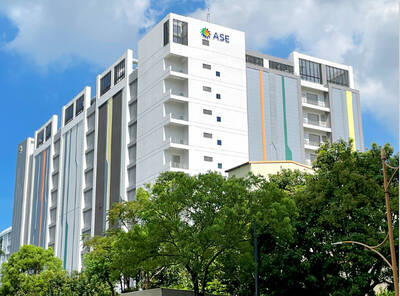China aims to restore most of its power lines before the Lunar New Year and reopened its airports even as more snow is forecast in the country's heaviest snowstorms in half a century.
The country needs to "ensure" the restoration of most electricity networks before the holiday, which starts on Wednesday, the National Development and Reform Commission said in a statement on its Web site yesterday. The worst affected are Hunan, Jiangxi and Guizhou provinces, which have only half their normal power capacity, it said.
More than two weeks of snow in central and southern China have brought transport networks to a standstill, killed at least 60 people and 15.8 million livestock and caused economic losses of at least 53.8 billion yuan (US$7.5 billion). The snow is forecast to continue until tomorrow after a temporary halt yesterday, Xinhua news agency said, citing the Central Meteorological Station.
"We have the faith, courage and ability to overcome the severe natural disaster," Chinese Premier Wen Jiabao (溫家寶), who was on board a train to disaster-hit central Hunan Province, was cited as saying by Xinhua.
PetroChina Co (
China has mobilized all its railway container trucks to ensure the transport of coal, Xinhua said yesterday, citing the Ministry of Railway. Coal shipments were increased to a record 42,200 trucks a day from Friday, it said. China relies on coal for 78 percent of its electricity.
By Thursday, domestic coal producers had total inventory of 34.7 million tonnes, 11.3 percent lower than the end of last year and down 1.8 percent from the same period a year earlier, Xinhua said, citing figures released by the State Administration of Work Safety (SAWS).
As much as 90 percent of key state-owned coal mines have been asked to continue production during the Lunar New Year holiday, it said, citing SAWS. Shenhua Group Corp (神華集團), China's biggest coal producer, could produce 20.2 million tonnes this month, higher than last month's 18 million tonnes, Xinhua said.
All airports were open yesterday, Xinhua said, citing the General Administration of Civil Aviation of China. On Saturday, the official news agency had said airports in Hangzhou and Ningbo were closed.

AI BOOST: Although Taiwan’s reliance on Chinese rare earth elements is limited, it could face indirect impacts from supply issues and price volatility, an economist said DBS Bank Ltd (星展銀行) has sharply raised its forecast for Taiwan’s economic growth this year to 5.6 percent, citing stronger-than-expected exports and investment linked to artificial intelligence (AI), as it said that the current momentum could peak soon. The acceleration of the global AI race has fueled a surge in Taiwan’s AI-related capital spending and exports of information and communications technology (ICT) products, which have been key drivers of growth this year. “We have revised our GDP forecast for Taiwan upward to 5.6 percent from 4 percent, an upgrade that mainly reflects stronger-than-expected AI-related exports and investment in the third

Mercuries Life Insurance Co (三商美邦人壽) shares surged to a seven-month high this week after local media reported that E.Sun Financial Holding Co (玉山金控) had outbid CTBC Financial Holding Co (中信金控) in the financially strained insurer’s ongoing sale process. Shares of the mid-sized life insurer climbed 5.8 percent this week to NT$6.72, extending a nearly 18 percent rally over the past month, as investors bet on the likelihood of an impending takeover. The final round of bidding closed on Thursday, marking a critical step in the 32-year-old insurer’s search for a buyer after years of struggling to meet capital adequacy requirements. Local media reports

TECHNOLOGICAL RIVALRY: The artificial intelligence chip competition among multiple players would likely intensify over the next two years, a Quanta official said Quanta Computer Inc (廣達), which makes servers and laptops on a contract basis, yesterday said its shipments of artificial intelligence (AI) servers powered by Nvidia Corp’s GB300 chips have increased steadily since last month, should surpass those of the GB200 models this quarter. The production of GB300 servers has gone much more smoothly than that of the GB200, with shipments projected to increase sharply next month, Quanta executive vice president Mike Yang (楊麒令) said on the sidelines of a technology forum in Taipei. While orders for GB200 servers gradually decrease, the production transition between the two server models has been

ASE Technology Holding Co (日月光投控), the world’s largest integrated circuit (IC) packaging and testing supplier, yesterday announced a strategic collaboration with Analog Devices Inc (ADI), coupled with the signing of a binding memorandum of understanding. Under the agreement, ASE intends to purchase 100 percent shares of Analog Devices Sdn Bhd and acquire its manufacturing facility in Penang, Malaysia, a press release showed. The ADI Penang facility is located in the prime industrial hub of Bayan Lepas, with an area of over 680,000 square feet, it said. In addition, the two sides intend to enter into a long-term supply agreement for ASE to